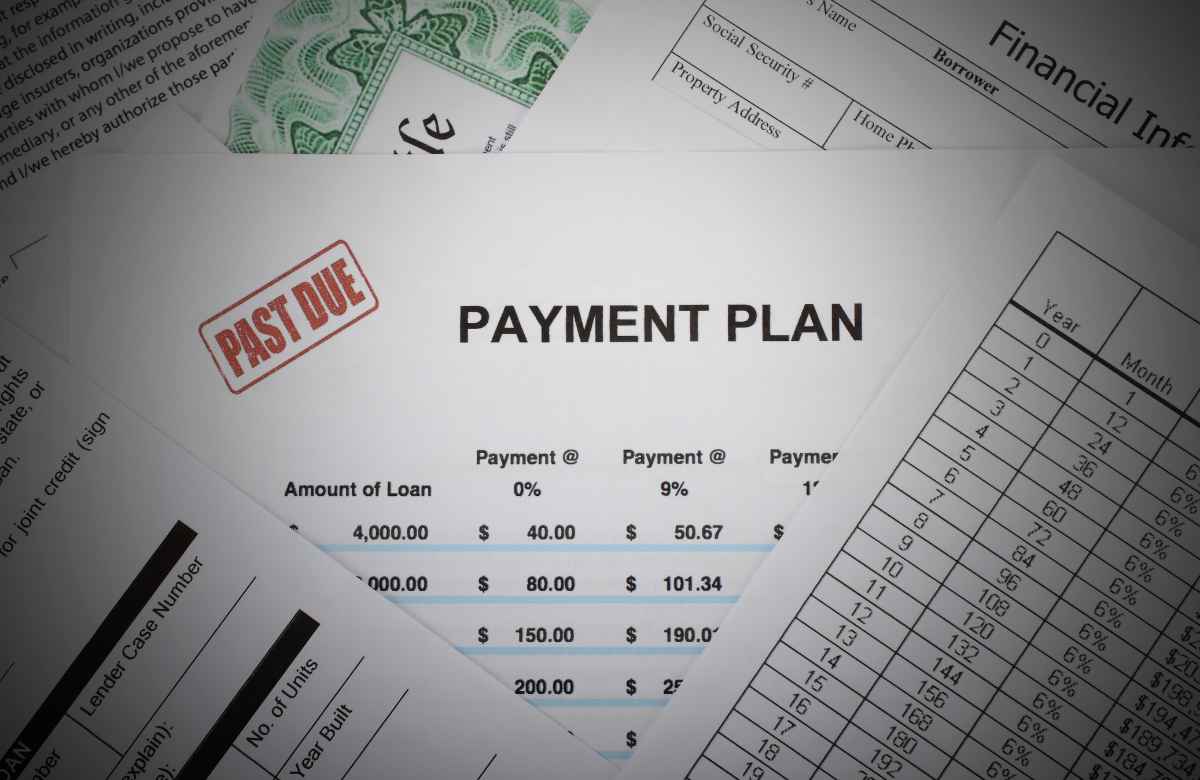Debt payment is not just a financial obligation; it’s a critical step toward achieving financial stability and peace of mind. Unpaid debts can lead to a cascade of problems, including legal consequences, damaged credit, and emotional stress.
The Role of Persuasion
Persuasion is the art of convincing debtors to willingly and proactively address their debts. It’s a win-win strategy that benefits both parties involved in the debt repayment process.
Overview of the Top 10 Techniques
In this article, we’ll explore the top 10 persuasion techniques for debt payment, providing valuable insights for creditors and debtors alike. These techniques can help bridge the gap between financial responsibility and effective debt repayment.
1. Understanding the Psychology of Debt
A. Why People Accumulate Debt
Understanding why people accumulate debt is crucial for effective persuasion. Common reasons include unexpected expenses, medical bills, or overspending. By comprehending these drivers, creditors can tailor their approach.
B. The Emotional Burden of Debt
Debt carries an emotional toll, including anxiety, shame, and guilt. Recognizing the emotional aspect of debt helps creditors approach debtors with empathy and understanding.
C. The Resistance to Debt Payment
Debtors often resist debt payment due to fears of financial instability and a perceived loss of control. By acknowledging and addressing these concerns, creditors can foster cooperation.
2. Building Empathy and Trust
A. Establishing Credibility
Building trust starts with demonstrating credibility. Creditors can show their commitment to helping debtors by being transparent and reliable in their interactions.
B. Showing Understanding
Empathizing with debtors’ situations is key. Creditors should actively listen to their concerns and show a genuine understanding of their challenges.
C. Demonstrating Empathy
Empathy is a powerful tool in building trust. It involves putting oneself in the debtor’s shoes and demonstrating a caring and compassionate attitude.
3. Communicating Effectively
A. Active Listening
Active listening is the foundation of effective communication. Creditors should listen carefully to debtors’ concerns and questions, acknowledging their feelings and addressing them thoughtfully.
B. Clarity in Communication
Clear and concise communication is essential to avoid misunderstandings. Debtors should fully understand the terms and conditions of their debt repayment plans.
C. Setting Clear Expectations
Creditors need to set clear expectations for debtors. This includes outlining what is required from the debtor and what they can expect in return.
4. Providing Incentives
A. Rewards for Timely Payments
Incentives can motivate debtors to make timely payments. Creditors can offer rewards such as discounts or bonuses for meeting payment deadlines.
B. Interest Rate Reductions
Reducing interest rates on outstanding debt can serve as a significant incentive for debtors to pay off their debts more quickly.
C. Debt Consolidation Options
Debt consolidation can make debt repayment more manageable. By consolidating debts into one lower-interest loan, debtors can reduce their overall burden.
5. Negotiating Settlements
A. The Art of Negotiation
Negotiation is a delicate art that can lead to mutually beneficial solutions. Creditors should be skilled negotiators to find common ground between both parties.
B. Offering Debt Settlements
Debt settlement can be an effective technique. It involves creditors offering debtors the opportunity to settle their debts for a lower amount, often in a lump-sum payment.
C. Finding Common Ground
The key to successful negotiation is finding common ground and compromise that works for both parties, ensuring a mutually beneficial outcome.
6. Developing Payment Plans

A. Creating Realistic Payment Plans
Effective persuasion often involves creating realistic payment plans. Creditors should work with debtors to establish plans that align with their income and expenses.
B. Adjusting Plans to Income
Flexibility is vital. Payment plans should be adjustable, considering changes in debtors’ financial situations.
C. Regular Reviews and Adjustments
Regularly reviewing and adjusting payment plans ensures that they remain effective and attainable for debtors.
7. Leveraging Emotional Appeals
A. Storytelling for Impact
Sharing relatable stories can create an emotional connection and drive debt payment. These stories illustrate the consequences and benefits of paying off debt.
B. Demonstrating Consequences
Creditors should emphasize the potential consequences of not paying off debt, such as credit damage and legal actions, to motivate debtors.
C. Fostering a Sense of Responsibility
Encourage debtors to take responsibility for their financial well-being and the impact of their debt on their future.
8. Using Persuasive Technology
A. Online Tools and Apps
Technology can facilitate debt payment. Creditors can introduce online tools and apps that make debt management and payment more accessible.
B. Automation and Reminders
Automation and reminder systems can help ensure timely payments, reducing the chances of missed deadlines.
C. Gamification
Making debt repayment engaging and rewarding through gamification can motivate debtors to stay on track with their payments.
9. Handling Difficult Cases
A. Dealing with Delinquent Accounts
Special strategies are required for delinquent accounts. Creditors should understand how to address these cases and encourage repayment.
B. Approaches for High Debt Levels
Debtors with high levels of debt may require unique approaches. Creditors should be prepared to handle these complex situations.
C. Legal Considerations
Debt persuasion must respect legal boundaries. Creditors should understand the legal implications and obligations in debt collection.
10. Managing Customer Objections
A. Addressing Common Concerns
Debtors may have common concerns and objections. Creditors should be prepared to address these to move the debt repayment process forward.
B. Overcoming Resistance
Debtors may resist the debt repayment process. Creditors should have strategies for overcoming resistance and hesitations.
C. Handling Customer Complaints
Customer complaints should be addressed constructively to maintain a positive relationship and ensure successful debt repayment.
Case Studies and Success Stories
A. Real-Life Examples of Debt Payment Success
Sharing real-life case studies of individuals who successfully paid off their debts using these techniques can inspire debtors.
B. How Persuasion Techniques Made a Difference
Highlight specific techniques that played a pivotal role in these success stories, emphasizing their effectiveness.
C. Inspiring Stories
Share inspiring stories that motivate debtors to take action towards debt payment. These can serve as powerful motivators.
Measuring and Tracking Progress
A. Setting Key Performance Indicators (KPIs)
Measuring progress is essential for both creditors and debtors. This section discusses how to establish key performance indicators to track progress.
B. Tools for Monitoring Debt Payment Progress
Introduce tools and methods for creditors and debtors to monitor and assess the progress of debt payments.
C. Celebrating Milestones
Celebrate achievements and milestones throughout the debt repayment journey to motivate debtors further.
Addressing FAQs
A. What Are the Most Common Debt Payment Challenges?
Discuss common challenges faced by debtors and provide practical solutions to overcome them.
B. How Can I Persuade Someone to Pay Off Their Debt?
Offer practical advice for individuals seeking to persuade someone to address their debt responsibly.
C. Are There Legal Implications to Debt Persuasion Techniques?
Explain the legal considerations and boundaries in debt persuasion, ensuring compliance with laws and regulations.
Ethical Considerations
A. The Importance of Ethical Debt Persuasion
Emphasize the ethical obligations of creditors in the debt persuasion process, maintaining fairness and integrity.
B. Avoiding Manipulative Tactics
Guide creditors on avoiding manipulative or coercive tactics in debt collection, ensuring a respectful approach.
C. Respecting Privacy and Boundaries
Respect the privacy and boundaries of debtors, maintaining a professional and ethical approach throughout the process.
Conclusion
A. Recap of Top 10 Persuasion Techniques
Summarize the top 10 persuasion techniques for debt payment, emphasizing their effectiveness in achieving debt repayment.
B. The Positive Impact of Debt Payment
Highlight the positive outcomes of debt payment, including financial freedom, reduced stress, and improved credit scores.
C. Encouraging Financial Responsibility
Encourage debtors to take responsibility for their financial well-being and continue practicing good financial habits.
